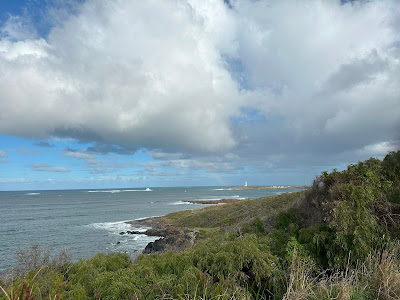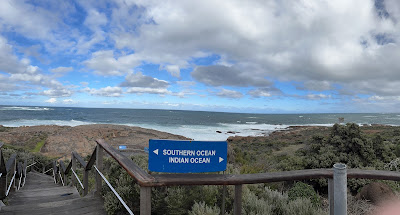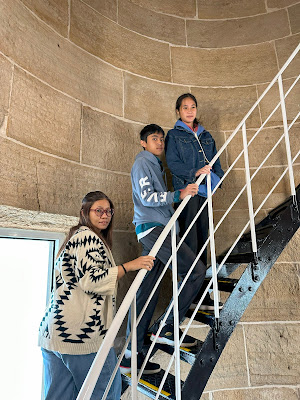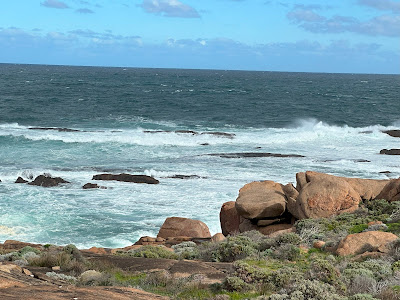After a 40 minutes' drive from Margaret River, we arrived at Cape Leeuwin Lighthouse. On the way, we stopped by a lookout point and once again, we sighted a rainbow right next to the lighthouse!
As the tallest lighthouse on mainland Australia, this historic lighthouse is situated at the most south-westerly point of Australia, at the tip of a spectacular peninsula - where the Southern and Indian Oceans meet.
We took a guided tour in which we got to climb up to the top of the lighthouse with a guide who provided lots of interesting information about the lighthouse.
This famous landmark was constructed from local limestone in 1895 and still functions as a vital working lighthouse for vessels navigating the treacherous cape. Twenty-two ships were wrecked around Cape Leeuwin before the lighthouse was officially opened in 1896 and only one shipwreck has occurred since.We started our climb up the lighthouse after our tour guide met us at the lighthouse entrance. He led us up to the top of the tower, while discussing aspects of the lighthouse's vital role in maritime safety, and interesting tales of its construction.
It's too challenging for us to climb up to the top of the lighthouse at one go. The tour guide understood that as there were quite a few old folks in the tour group. We took a brief rest stop at several platform after several flights of stairs.There were windows at the midpoint of the lighthouse where we could look out to the ocean.
At one point, the stairs were painted with alternate red and green paint. According to the tour guide, the reason was that the paint would have taken days to dry inside the lighthouse but the keepers then still had to climb up and down to operate the light. As such, they painted alternate steps with red paint first while the keepers could use the unpainted steps. Once the red paint had dried, they then started painting the other steps with green paint.
Built by timber tycoon Maurice Coleman Davies and John Wishart, with a clockwork apparatus and a kerosene lantern designed by Chance Brothers, the 39m tall light operated in original condition until 1982, when it was converted to hydraulics and electricity.
At the top of the lighthouse, we were allowed to step outdoor onto the tower balcony. We had a spectacular view of a vast seascape of crashing waves, rocky outcrops and rugged coastline. We did not stay outdoor for too long as it was extremely windy. However, according to the tour guide, the wind speed that day was just about normal.
Cape Leeuwin was named by Flinders in 1801 after the Dutch exploration ship the Leeuwin (meaning ‘lioness’), that visited the area in 1622.
We then walked down the stairs to make way for the next tour group.The tour ended once we exited the lighthouse. We began exploring various sites around Cape Leeuwin Lighthouse.
An Interpretive Centre, housed in one of the original lighthouse keepers' cottages, celebrates the history and lives of the numerous lighthouse keepers who were custodians of this rugged coastline. Using artefacts and stories, interactive technology and a large-scale animated film, visitors can discover fascinating insights into the lives of the men, women and children who once lived at the tallest lighthouse in mainland Australia.































No comments:
Post a Comment